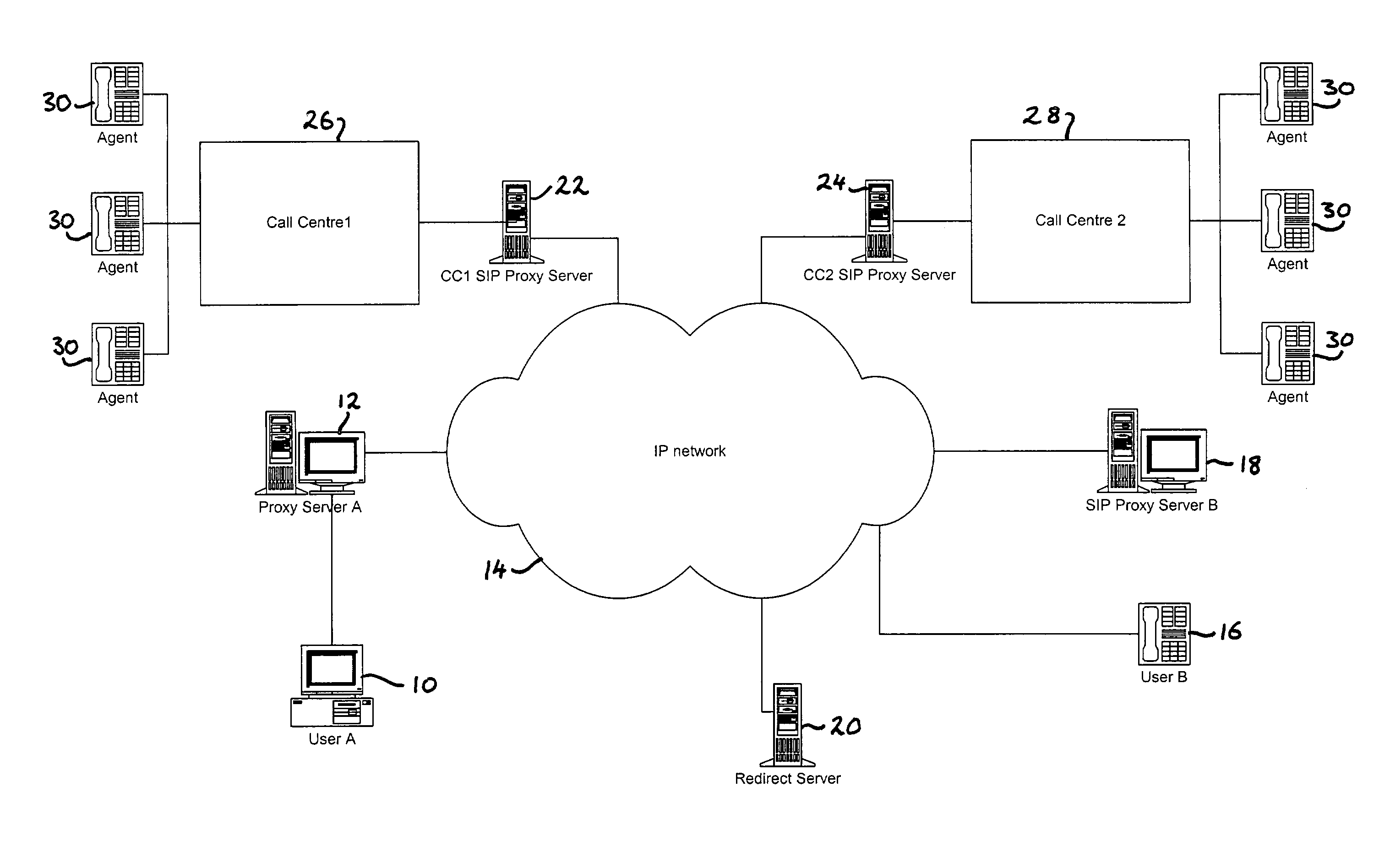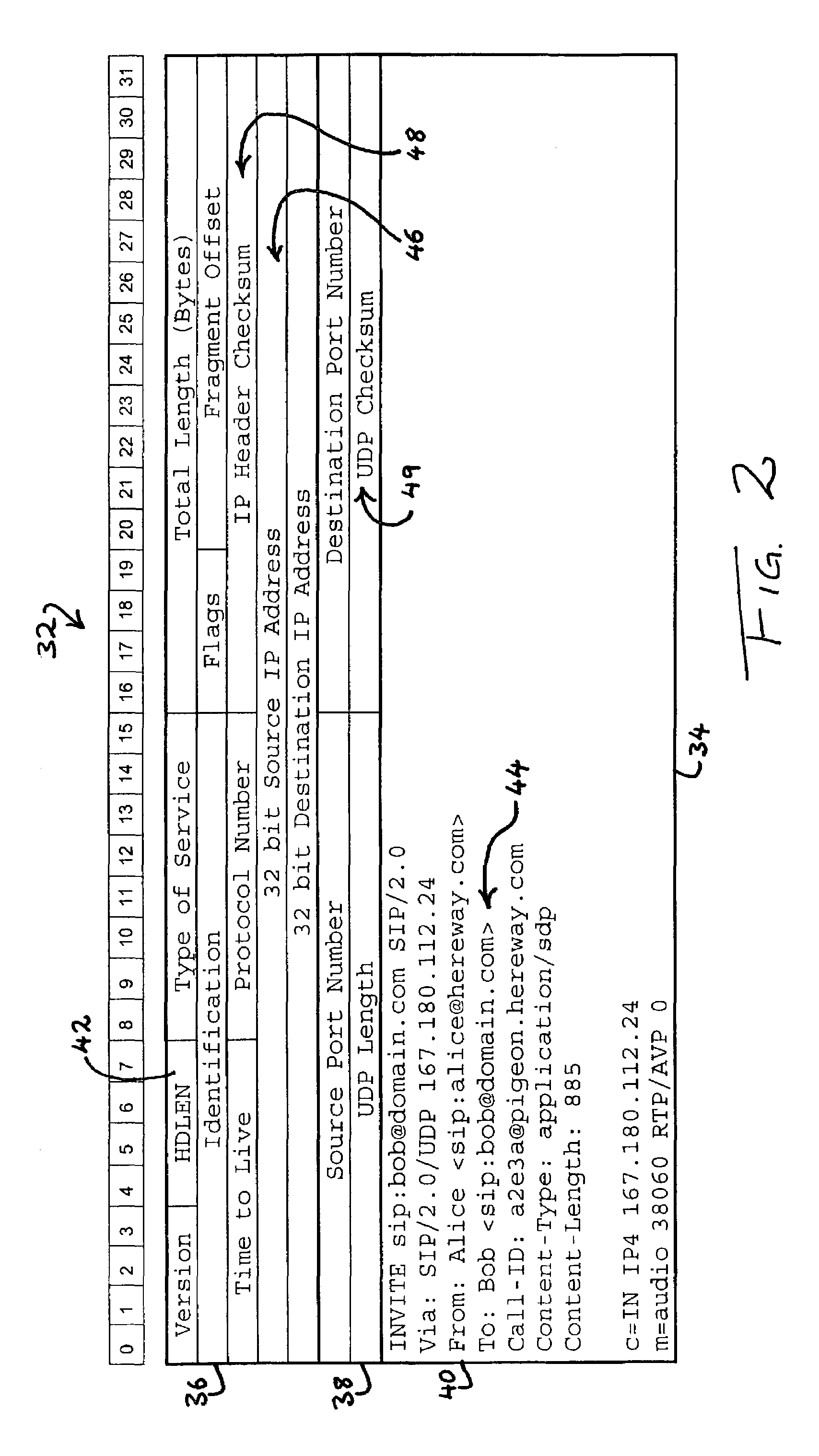Processing of communication session request messages
a communication session and request message technology, applied in the field of processing methods and apparatus for processing communication session request messages, can solve the problems of imposing significant processing overhead on all of the servers involved, high processing overheads throughout the ip stack and in particular at the application layer, and high processing overheads
- Summary
- Abstract
- Description
- Claims
- Application Information
AI Technical Summary
Benefits of technology
Problems solved by technology
Method used
Image
Examples
Embodiment Construction
[0052]FIG. 1 shows the architecture of a typical SIP environment, involving a number of entities. A personal computer 10 running suitable software operates as a SIP-enabled softphone for a user A. This softphone 10 connects to a SIP proxy server 12 (proxy server A) which in turn connects to an IP network such as the Internet 14. A second user, user B, also connects to the Internet via a SIP-enabled Ethernet phoneset 16. User 16 is registered with a registrar running on a SIP proxy server 18 (shown as SIP proxy server B). A redirect server 20 operates to transfer SIP messages across the IP network. This redirect server also operates a location server function.
[0053]Two further proxy servers 22, 24 each provide an interface to a respective call centre 26, 28, at each of which a plurality of agents 30 is located. The call centres receive SIP-based calls via the proxy servers, and receive other calls via the PSTN. Such call centres commonly also receive other media types such as video c...
PUM
 Login to View More
Login to View More Abstract
Description
Claims
Application Information
 Login to View More
Login to View More - R&D
- Intellectual Property
- Life Sciences
- Materials
- Tech Scout
- Unparalleled Data Quality
- Higher Quality Content
- 60% Fewer Hallucinations
Browse by: Latest US Patents, China's latest patents, Technical Efficacy Thesaurus, Application Domain, Technology Topic, Popular Technical Reports.
© 2025 PatSnap. All rights reserved.Legal|Privacy policy|Modern Slavery Act Transparency Statement|Sitemap|About US| Contact US: help@patsnap.com



